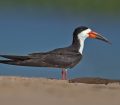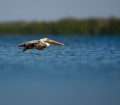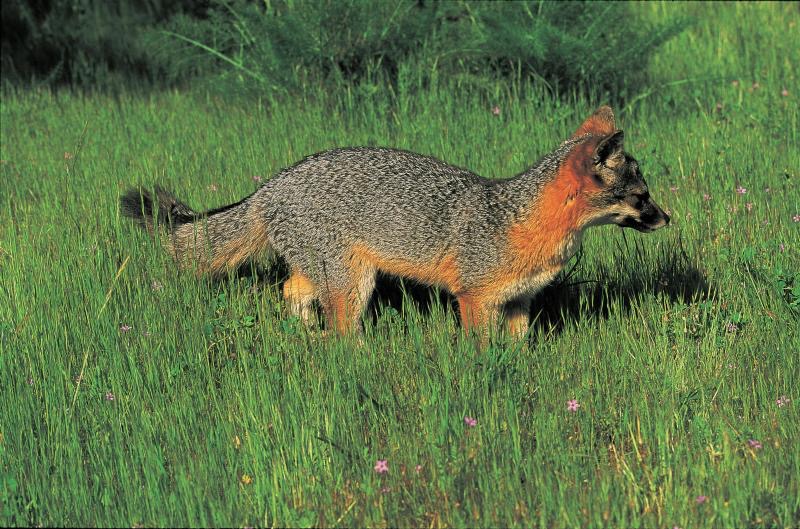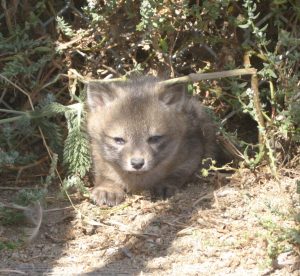The Channel Island Fox (Urocyon litoralis) is a small fox living on six of the eight Channel Islands off the California coast. Due to their separation of up to 170 miles and being confined to each island, the Foxes have evolved into unique species similar to Darwin’s Finches in the Galapagos Islands. The Foxes are thought to have reached the off shore islands over 15,000 years ago during the last ice age where they may have “rafted” a few miles to the northern islands which became increasingly isolated as sea levels rose and created the eight islands we know today. Approximately 13,000 years ago sea going indigenous people’s began to visit the Channel Islands and may have also carried the Island Foxes to new homes farther south along the archipelago. There are no Island Foxes on Anacapa or Santa Barbara Island due to lack of water.
Appearance wise the Island Fox looks similar to its main land cousin the Gray Fox, but it is considerably smaller. The Island Fox is only the size of a small house cat probably due the limited resources of the Channel Islands as it was advantageous to be small and require less water and food. Their coats are silvery grey on top, reddish brown on the sides and they have a white belly. Fox kits are very fuzzy and have darker coats to blend in with the ground.
The Island Fox are at once the largest endemic mammals on the Channel Islands and the smallest carnivore in California. The Island Fox’s diets vary depending on the slim pickings of which Channel Islands they live on but generally eat vegetation, rodents, insects and some seafood such as crabs the Foxes find along the shore lines.
The Foxes had no predators and thrived on the isolated Islands so much that they are generally far more active in the day than other species of Fox. This eventually became turned upside down as non-native species of plants and animals changed the landscape of the islands. Pigs, goats and deer ate the plants the Foxes used for food and cover. Diseases from the mainland were introduced by stow away raccoons and pet dogs. And in an ironic twist, the decline of top predator the Bald Eagle which only ate sea food, allowed the Golden Eagle to come to the islands and hunt the Foxes. By the mid 19190’s the Fox population got as low as 15 on some of the smaller Islands and in 2004 they were declared an endangered species. Luckily for the Foxes conservation efforts were put into place to restore the balance of the Islands by removing non-native flora and fauna. In addition, captive breeding programs brought the Fox populations up to levels not seen in almost a century. You can now camp at the National Parks established on the various Channel Islands and have a good chance of spotting an Island Fox for yourself.
Epilogue: Just this week the Federal Government declared the Island Foxes no longer threatened, a truly happy ending to the long history of one of California’s most unique animals !





